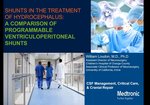Video Player is loading.
Current Time 0:00
/
Duration 0:00
Loaded: 0%
Stream Type LIVE
1x
- 0.5x
- 0.75x
- 1x, selected
- 1.25x
- 1.5x
- 1.75x
- 2x
- Chapters
- descriptions off, selected
- captions settings, opens captions settings dialog
- captions off, selected
This is a modal window.
Beginning of dialog window. Escape will cancel and close the window.
End of dialog window.
10 seconds
Playback speed
This is a modal window. This modal can be closed by pressing the Escape key or activating the close button.
Flexible Endoscopic-assisted Microsurgical Radical Resection of Intracanalicular Vestibular Schwannomas by Retrosigmoid Approach: Operative Technique
2,586 views
April 28, 2018
Backgrounds: The efficacy of endoscopic techniques in the surgical management of intracanalicular vestibular schwannomas (ICVS) ...
read more ↘ has been underlined in recent studies. Particularly, endoscopic assisted retrosigmoid approach (EARSA) appears particularly suitable in achieving complete resection of ICVS.
Objective: In this study we present the surgical treatment of 3 cases of ICVS, treated with an endoscopic assisted retrosigmoid approach, highlighting advantages and limitations of flexible endoscope in the accomplishment of a safe radical resection with hearing preservation.
Methods: Three patients harboring ICVS were operated on through a flexible endoscopic-assisted microneurosurgical retrosigmoid approach.
Results: Flexible endoscopic assistance allowed identifications of residual tumor located in the most lateral portion of the fundus of the internal auditory canal (IAC) in all cases. Endoscopic controls and further microsurgical resection was attempted and complete surgical resection was achieved in all cases without occurrence of postoperative facial or auditory nerve dysfunctions.
Conclusions: Flexible endoscope appears to be particularly useful and safe in the surgical management of ICVS operated on with endoscopic-assisted-microneurosurgery by retrosigmoid approach.
↖ read less
read more ↘ has been underlined in recent studies. Particularly, endoscopic assisted retrosigmoid approach (EARSA) appears particularly suitable in achieving complete resection of ICVS.
Objective: In this study we present the surgical treatment of 3 cases of ICVS, treated with an endoscopic assisted retrosigmoid approach, highlighting advantages and limitations of flexible endoscope in the accomplishment of a safe radical resection with hearing preservation.
Methods: Three patients harboring ICVS were operated on through a flexible endoscopic-assisted microneurosurgical retrosigmoid approach.
Results: Flexible endoscopic assistance allowed identifications of residual tumor located in the most lateral portion of the fundus of the internal auditory canal (IAC) in all cases. Endoscopic controls and further microsurgical resection was attempted and complete surgical resection was achieved in all cases without occurrence of postoperative facial or auditory nerve dysfunctions.
Conclusions: Flexible endoscope appears to be particularly useful and safe in the surgical management of ICVS operated on with endoscopic-assisted-microneurosurgery by retrosigmoid approach.
↖ read less
Comments 3
Login to view comments.
Click here to Login





















